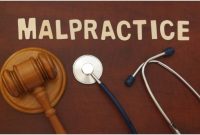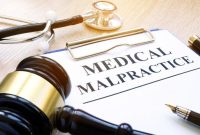Medical malpractice cases are complex and challenging, and proving negligence is essential to obtaining a favorable outcome. In this comprehensive guide, we will explore the role of the lawyer in proving negligence in medical malpractice cases, from gathering evidence and establishing causation to ethical considerations and trial strategies.
As we delve into the intricacies of medical malpractice law, we will provide practical insights and actionable advice to help lawyers effectively navigate the legal landscape and advocate for their clients.
Understanding Medical Malpractice
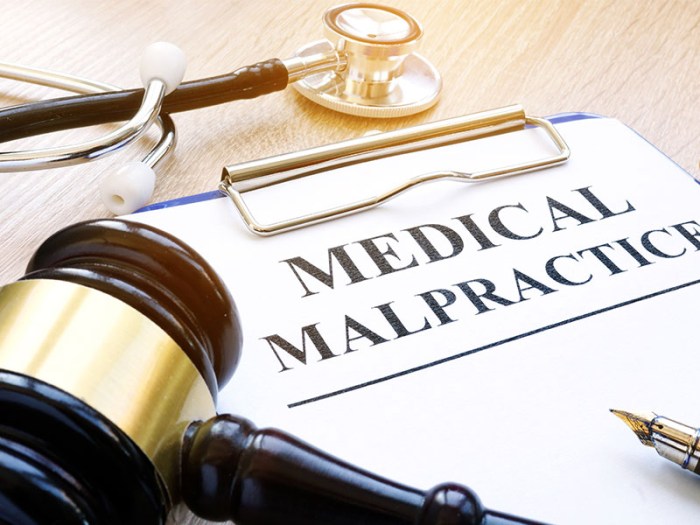
Medical malpractice is a legal term used to describe a situation in which a healthcare professional or institution fails to provide proper medical care to a patient, resulting in harm or injury. It involves four key elements:
- Duty of care: The healthcare professional or institution has a legal obligation to provide a certain standard of care to the patient.
- Breach of duty: The healthcare professional or institution failed to meet the required standard of care.
- Causation: The breach of duty directly caused the patient’s injury or harm.
- Damages: The patient suffered damages as a result of the injury or harm.
Negligence in Medical Malpractice Cases
Negligence is a key element in medical malpractice cases. It refers to a failure to exercise the level of care that a reasonably prudent healthcare professional would have exercised in the same situation. Negligence can manifest in various ways, including:
- Diagnostic errors: Failing to correctly diagnose a patient’s condition, leading to delayed or improper treatment.
- Treatment errors: Administering incorrect medication, performing surgery on the wrong body part, or failing to follow proper surgical procedures.
- Medication errors: Prescribing the wrong medication, incorrect dosage, or failing to monitor for adverse reactions.
- Lack of informed consent: Failing to provide adequate information about a medical procedure or its risks before obtaining the patient’s consent.
- Negligent hiring or supervision: Employing or supervising healthcare professionals who are incompetent or have a history of malpractice.
Establishing the Lawyer’s Role
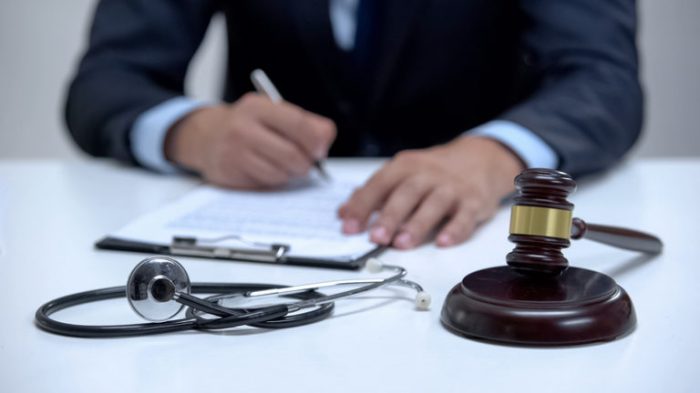
In medical malpractice cases, lawyers play a crucial role in protecting the rights of individuals who have suffered harm due to medical negligence. They have the responsibility to meticulously investigate the circumstances surrounding the alleged negligence, gather evidence, and present a compelling case in court.
One of the key responsibilities of a lawyer in medical malpractice cases is to understand the complex medical terminology and procedures involved. They must be able to effectively communicate with medical experts, interpret medical records, and present complex medical information to the jury in a clear and understandable manner.
Understanding Medical Terminology and Procedures
Understanding medical terminology and procedures is paramount for lawyers handling medical malpractice cases. This knowledge enables them to:
- Effectively communicate with medical experts, such as doctors, nurses, and other healthcare professionals, to gather accurate information and build a strong case.
- Comprehensively review and interpret medical records, including patient charts, test results, and imaging scans, to identify potential evidence of negligence.
- Explain complex medical concepts and procedures to the jury in a clear and concise manner, ensuring that they have a thorough understanding of the case.
Lawyers who specialize in medical malpractice often undergo extensive training and education to gain a deep understanding of medical terminology and procedures. They may attend medical conferences, consult with medical experts, and review medical literature to stay abreast of the latest advancements in the field.
Gathering Evidence of Negligence
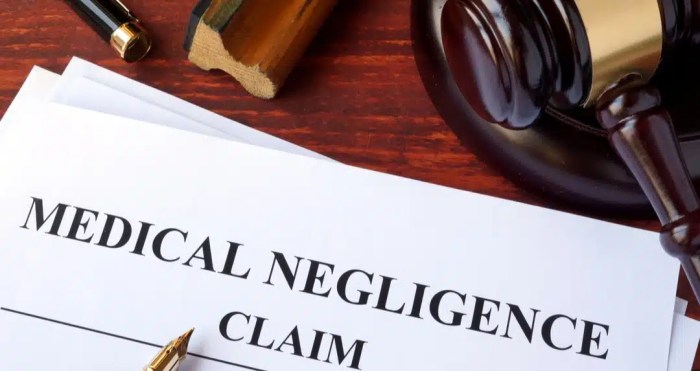
To establish negligence in medical malpractice cases, attorneys must gather comprehensive evidence to support their claims. This includes obtaining medical records, securing expert witness testimony, and collecting other relevant documents.
Medical Records
Medical records provide a detailed account of a patient’s medical history, including the diagnosis, treatment plan, and any complications that may have occurred. Attorneys can obtain these records through a formal request to the healthcare provider or by subpoena.
Expert Witness Testimony
Expert witnesses are medical professionals who provide their opinions on the standard of care and whether it was breached in the specific case. Attorneys typically retain experts in the relevant medical field to review the medical records and provide testimony on the defendant’s actions or omissions.
Other Relevant Documents
In addition to medical records and expert witness testimony, attorneys may also collect other relevant documents to support their case, such as:
- Hospital policies and procedures
- Medical research articles
- Patient complaints or grievances
- Correspondence between the patient and healthcare provider
Gathering evidence of negligence is crucial in medical malpractice cases. Attorneys must thoroughly review all available documents, consult with experts, and build a strong case to support their clients’ claims.
Proving Causation
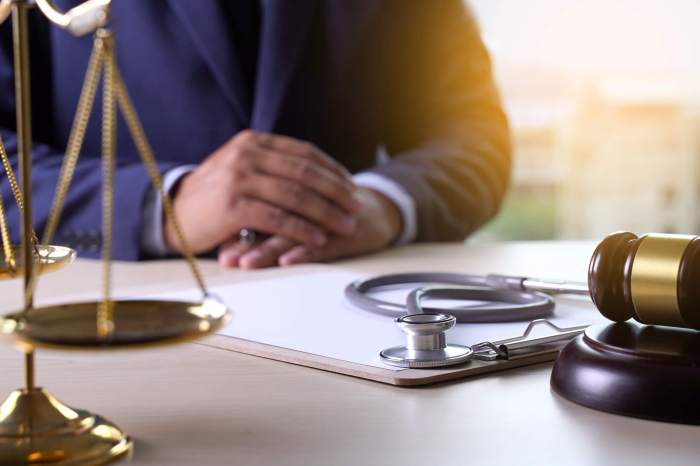
In medical malpractice cases, proving causation means establishing that the doctor’s negligence caused the patient’s injuries or damages.
There are two main methods for establishing causation:
The “But For” Test
The “but for” test asks whether the patient’s injuries would have occurred “but for” the doctor’s negligence. If the answer is yes, then the doctor’s negligence is the cause of the patient’s injuries.
The “Proximate Cause” Doctrine
The “proximate cause” doctrine is a legal concept that limits the liability of a defendant for the consequences of their actions. In medical malpractice cases, the proximate cause doctrine requires that the doctor’s negligence be the “proximate cause” of the patient’s injuries.
This means that the doctor’s negligence must be the direct and foreseeable cause of the patient’s injuries.
Damages in Medical Malpractice Cases
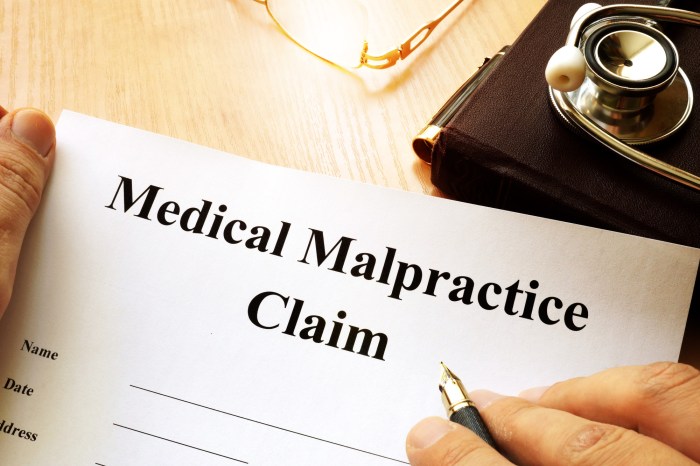
In medical malpractice cases, the damages awarded to the victim aim to compensate them for the losses they have suffered as a result of the negligence of the healthcare provider. These damages can be categorized into two main types: economic and non-economic.
Economic Damages
Economic damages are those that can be calculated with a specific monetary value. They include:
- Medical expenses: This includes the costs of treatment, hospitalization, medication, and other medical expenses incurred as a result of the malpractice.
- Lost income: This compensates the victim for the wages they have lost due to their inability to work as a result of the malpractice.
- Loss of earning capacity: This compensates the victim for the future income they are likely to lose due to their reduced ability to work as a result of the malpractice.
- Property damage: This compensates the victim for any damage to their property caused by the malpractice.
Non-Economic Damages
Non-economic damages are those that are more difficult to quantify and are intended to compensate the victim for the pain and suffering they have experienced as a result of the malpractice. They include:
- Pain and suffering: This compensates the victim for the physical and emotional pain they have experienced as a result of the malpractice.
- Emotional distress: This compensates the victim for the mental anguish and emotional distress they have experienced as a result of the malpractice.
- Loss of enjoyment of life: This compensates the victim for the loss of enjoyment they have experienced in their life as a result of the malpractice.
- Loss of consortium: This compensates the victim’s spouse or family members for the loss of companionship and support they have experienced as a result of the malpractice.
The lawyer plays a crucial role in calculating and presenting damages in medical malpractice cases. They must gather evidence to support the victim’s claims, such as medical records, expert testimony, and financial documents. They must also be able to effectively communicate the impact of the malpractice on the victim’s life to the jury or judge.
Defenses to Medical Malpractice Claims
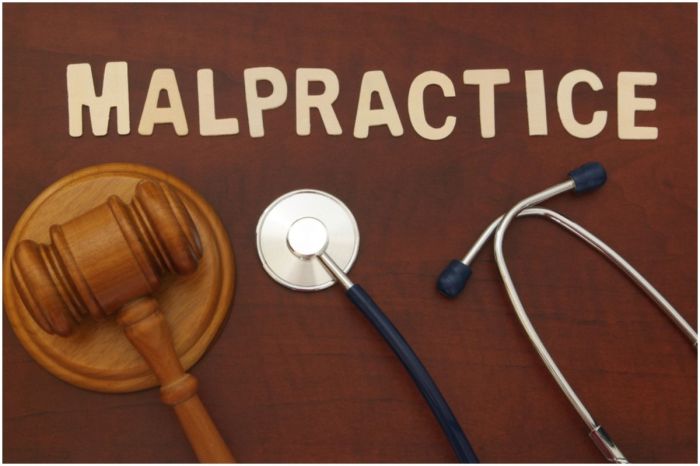
In medical malpractice cases, defendants commonly raise various defenses to counter the allegations of negligence. As a lawyer, it is crucial to anticipate these defenses and develop effective strategies to counter them.
Standard of Care
Defendants may argue that the medical professional met the applicable standard of care, which is typically determined by the practices of similar professionals in the same field and location. To counter this defense, lawyers can present evidence of specific deviations from the standard of care or establish that the professional’s actions fell below the acceptable range of practice.
Lack of Causation
Defendants may claim that the plaintiff’s injuries were not caused by the medical professional’s negligence. Lawyers can counter this defense by presenting evidence of a causal link between the negligence and the injuries, such as medical records or expert testimony.
Contributory Negligence
Defendants may argue that the plaintiff’s own actions contributed to the injuries. Lawyers can counter this defense by proving that the medical professional’s negligence was the primary cause of the injuries or that the plaintiff’s actions were reasonable under the circumstances.
Statute of Limitations
Defendants may raise the statute of limitations as a defense, arguing that the plaintiff filed the lawsuit after the legal deadline. Lawyers can counter this defense by showing that the plaintiff was unaware of the injury or that there were extenuating circumstances that prevented them from filing sooner.
Informed Consent
Defendants may argue that the plaintiff consented to the medical procedure and therefore cannot claim negligence. Lawyers can counter this defense by proving that the plaintiff did not fully understand the risks of the procedure or that the medical professional failed to obtain proper consent.
Ethical Considerations in Medical Malpractice Cases
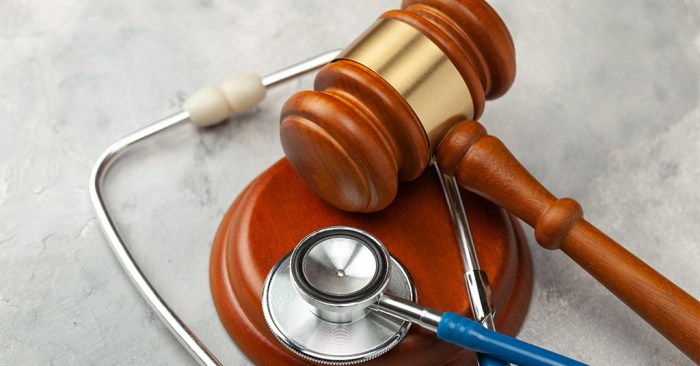
Lawyers involved in medical malpractice cases have specific ethical obligations they must adhere to. These obligations are essential for maintaining the integrity of the legal process and protecting the rights of both the client and the defendant.
Maintaining Client Confidentiality
Lawyers are ethically bound to maintain the confidentiality of all communications and information shared with them by their clients. This includes any sensitive medical information or personal details that may arise during the case. Lawyers must take reasonable steps to protect this information from unauthorized disclosure, both during and after the representation.
Avoiding Conflicts of Interest
Lawyers must avoid any conflicts of interest that could compromise their ability to represent their clients effectively. This includes representing multiple parties with conflicting interests in the same case or having a personal or financial stake in the outcome of the case.
If a conflict of interest arises, lawyers must disclose it to their clients and take appropriate steps to resolve the conflict or withdraw from the representation.
Trial Strategies in Medical Malpractice Cases
Trial preparation and execution are critical in medical malpractice cases. The plaintiff’s attorney must thoroughly understand the medical and legal issues involved and be able to present a compelling case to the jury.
Jury Selection
The jury selection process is crucial in medical malpractice cases. The attorney must select jurors who are open-minded, intelligent, and willing to follow the law. The attorney should also consider the jurors’ backgrounds, experiences, and biases to ensure a fair and impartial jury.
Opening Statements
The opening statement is the attorney’s first opportunity to present the case to the jury. The attorney should use this opportunity to introduce the parties, explain the legal issues involved, and Artikel the evidence that will be presented. The opening statement should be clear, concise, and persuasive.
Closing Arguments
The closing argument is the attorney’s last opportunity to persuade the jury to find in favor of their client. The attorney should use this opportunity to summarize the evidence, argue the law, and appeal to the jury’s sense of justice.
The closing argument should be passionate, persuasive, and memorable.
Outcome Summary
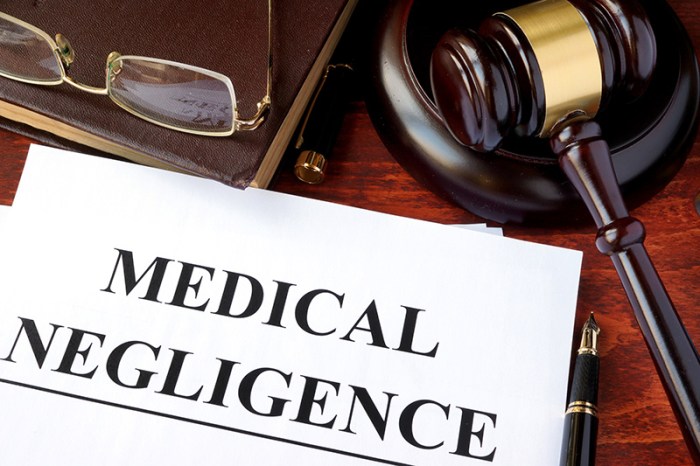
In conclusion, proving negligence in medical malpractice cases requires a thorough understanding of the law, meticulous attention to detail, and a relentless pursuit of justice. By leveraging the strategies and guidance Artikeld in this guide, lawyers can effectively represent their clients, hold negligent medical professionals accountable, and ensure that victims of medical malpractice receive the compensation they deserve.
FAQ
What are the key elements of medical malpractice?
Medical malpractice occurs when a healthcare professional breaches their duty of care to a patient, causing harm. Key elements include duty of care, breach of duty, causation, and damages.
What is the role of the lawyer in a medical malpractice case?
The lawyer’s role is to represent the victim, gather evidence of negligence, establish causation, calculate damages, and advocate for a favorable outcome.
What types of evidence are needed to prove negligence?
Evidence may include medical records, expert witness testimony, witness statements, and documentation of damages.
How is causation established in medical malpractice cases?
Causation can be established through the “but for” test or the “proximate cause” doctrine, demonstrating that the healthcare professional’s negligence directly caused the patient’s injuries.
What are the common defenses to medical malpractice claims?
Common defenses include lack of duty, lack of breach, lack of causation, and contributory negligence.


